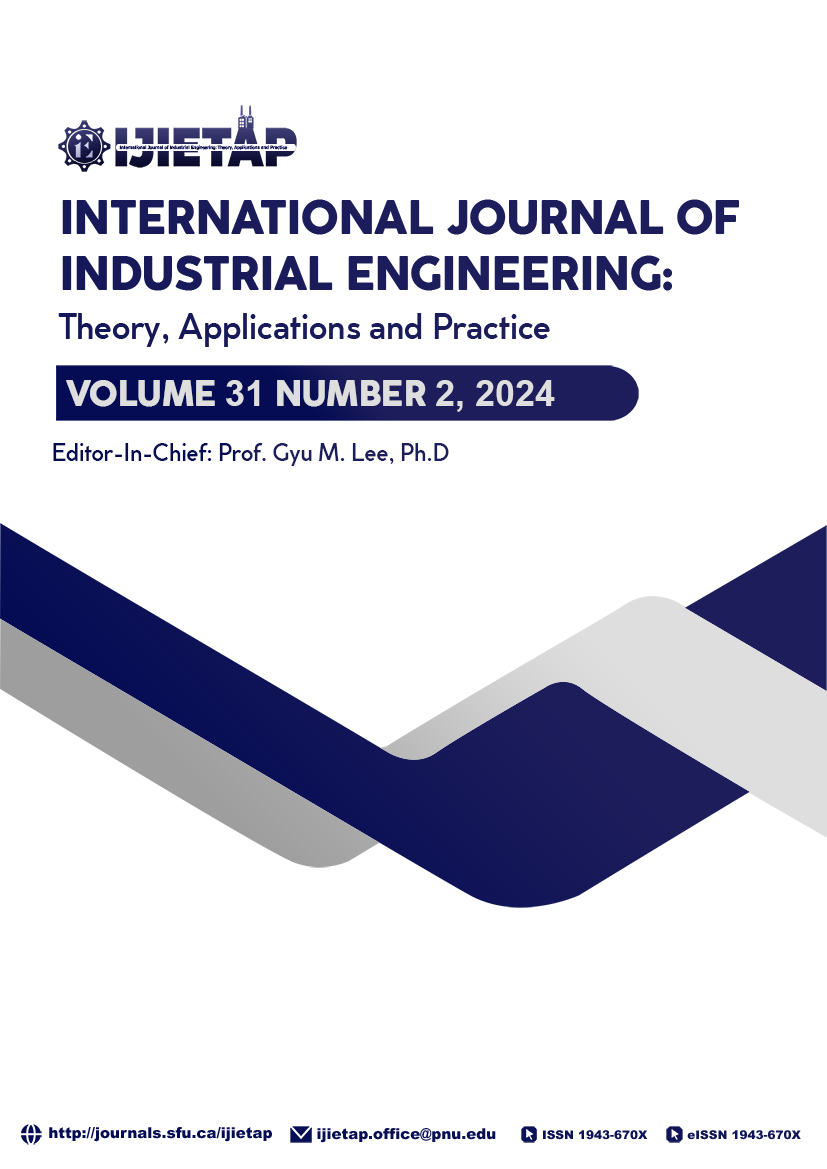DUAL-OBJECTIVE ORDER SEQUENCING IN A PUT-WALL-BASED PICKING STATION
DOI:
https://doi.org/10.23055/ijietap.2024.31.2.9757Keywords:
Order pickingAbstract
The growing e-commerce market has forced distribution companies to provide faster and more accurate delivery services. The order-picking process is the most time-consuming and labor-intensive of the logistics processes carried out in a distribution center. This study considers an order sequencing problem in a put-wall-based picking station. We introduce the problem of distributors aiming to optimize the order-picking sequence to minimize the total dwell time of SKUs as well as the maximum number of SKUs dwelling at the picking station. To tackle this problem, we propose a three-solution approach involving mixed integer nonlinear programming (MINLP), mixed integer linear programming (MILP), and NSGA-II, a non-dominated sorting genetic algorithm. Additionally, we conduct a comparative analysis and verify the performance capabilities of each approach through numerical experiments.
Published
How to Cite
Issue
Section
License
The Author(s) must formally transfer each article's copyright before publication in the INTERNATIONAL JOURNAL OF INDUSTRIAL ENGINEERING. Such transfer enables the Journal to defend itself against plagiarism and other forms of copyright infringement. Your cooperation is appreciated.
You agree that the copyright of your article to be published in the INTERNATIONAL JOURNAL OF INDUSTRIAL ENGINEERING - THEORY, APPLICATIONS, AND PRACTICE is hereby transferred, throughout the World and for the full term and all extensions and renewals thereof, to INTERNATIONAL JOURNAL OF INDUSTRIAL ENGINEERING - THEORY, APPLICATIONS, AND PRACTICE.
The Author(s) reserve(s): (a) the trademark rights and patent rights, if any, and (b) the right to use all or part of the information contained in this article in future, non-commercial works of the Author's own, or, if the article is a "work-for-hire" and made within the scope of the Author's employment, the employer may use all or part of the information contained in this article for intra-company use, provided the usual acknowledgments are given regarding copyright notice and reference to the original publication.
The Author(s) warrant(s) that the article is Author's original work and has not been published before. If excerpts from copyrighted works are included, the Author will obtain written permission from the copyright owners and credit the article's sources.
The author also warrants that the article contains no libelous or unlawful statements and does not infringe on the rights of others. If the article was prepared jointly with other Author(s), the Author agrees to inform the co-Author(s) of the terms of the copyright transfer and to sign on their behalf; or in the case of a "work-for-hire," the employer or an authorized representative of the employer.
The journal does not provide the author copy of the final paper when it is published. The author(s) can make(s) a subscription to INTERNATIONAL JOURNAL OF INDUSTRIAL ENGINEERING - THEORY, APPLICATIONS, AND PRACTICE if they want to get the final paper that has already been published.
The journal is registered with the Library of Congress (ISSN # 1943-670X). All rights reserved. No part of this publication may be reproduced, stored in a retrieval system, or transmitted in any form or by any means, electronic, mechanical, photocopying, recording, or otherwise, without the prior written permission of the journal.
The author reserves patent and trademark rights and the right to use all or part of the information contained in the article in future non-commercial works.





